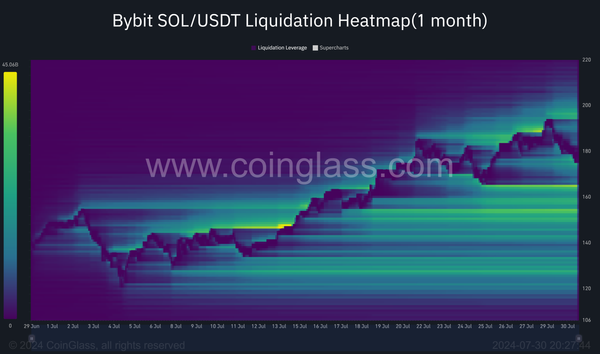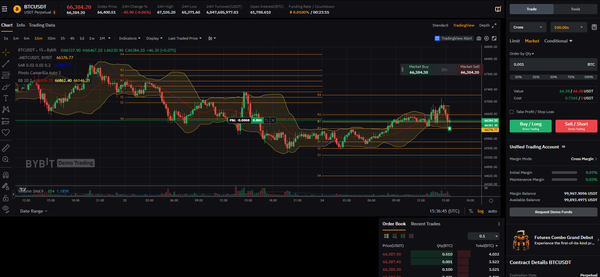Perpetual Futures: Unveiling the Pricing Mechanisms

The financial derivatives landscape is constantly evolving, and perpetual futures contracts have emerged as a game-changer. Unlike traditional futures with expiration dates, perpetual futures offer continuous speculation on an underlying asset's price without the hassle of contract rollovers. This flexibility makes them a favorite in the fast-paced world of cryptocurrency markets. A recent groundbreaking paper by Ackerer, Hugonnier, and Jermann, titled "Perpetual Futures Pricing," dives deep into the intricate world of perpetual futures pricing. Let's explore the key takeaways and technical insights from their research.
Understanding Perpetual Futures
Perpetual futures are a unique breed of financial derivatives. Unlike their traditional counterparts, they lack a fixed expiry date. This translates into two key benefits:
- Simplified Trading: Investors can hold positions for their desired timeframe without the need to constantly roll over expiring contracts.
- Enhanced Liquidity: A single, perpetual contract for each asset fosters higher liquidity, leading to more efficient price discovery.
While perpetual futures aim to mirror the spot price of the underlying asset, market forces can cause temporary deviations, resulting in premiums or discounts. To maintain a close peg, these contracts utilize periodic funding payments exchanged between long and short positions.
The Technical Deep Dive
The paper by Ackerer et al. establishes a comprehensive framework for perpetual futures pricing, encompassing both discrete and continuous time settings. Here's a breakdown of the key technical contributions:
- No-Arbitrage Pricing: The authors establish formulas for the fair price of various perpetual futures contracts, including linear, inverse, and quanto structures. They demonstrate that the futures price reflects the risk-neutral expectation of the spot price at a random time, influenced by the funding mechanism's intensity.
- Discrete-Time Formulation: The paper breaks down pricing for different perpetual futures types:
- Linear Perpetual Futures: A recursive formula for the futures price is presented, along with conditions ensuring a unique solution and alignment with the spot price.
- Inverse Perpetual Futures: Similar to linear futures but quoted in the base currency and margined in the target currency. The paper provides a unique solution for the inverse perpetual futures price.
- Quanto Perpetual Futures: These contracts offer exposure to the exchange rate between two currencies but are margined and funded using a third. The paper derives the pricing formula for this structure in discrete time.
- Continuous-Time Formulation: Building upon the discrete-time framework, the paper presents:
- Linear Perpetual Futures: The stochastic differential equation (SDE) governing the futures price is derived, along with explicit expressions for the price.
- Inverse Perpetual Futures: Cash flows and funding parameters are adjusted for the inverse structure, resulting in the continuous-time SDE and a unique solution.
- Quanto Perpetual Futures: The paper incorporates the covariance between involved exchange rates and considers convexity adjustments to derive the futures price in continuous time.
- Funding and Price Anchoring: A crucial insight from the paper is the identification of funding specifications that guarantee the perpetual futures price aligns with the spot price. By setting appropriate funding parameters, exchanges can achieve perfect anchoring, enabling dynamic replication through trading the underlying assets.
- Random Time Representation: The paper highlights that the perpetual futures price can be viewed as the discounted expected value of the spot price at a random time, determined by the funding parameters. This approach sheds light on how funding payments influence the futures price.
- Everlasting Options: The paper introduces the concept of everlasting options, which are essentially perpetual futures tracking functions of the spot price. Pricing formulas are provided, along with closed-form solutions in a Black-Scholes setting. The discussion clarifies the distinction between everlasting options and traditional perpetual American options.
Historical Context and Market Impact
The paper traces the evolution of perpetual futures, from their early implementations in Hong Kong to their widespread adoption in cryptocurrency exchanges like BitMEX. It also reviews empirical studies on perpetual futures, focusing on their role in price discovery, cost of carry, and market structure.
Mathematical Foundation
The paper is meticulously crafted with detailed mathematical derivations, ensuring the pricing formulas adhere to no-arbitrage principles. It leverages stochastic calculus, martingale theory, and probability measures to derive and validate the pricing expressions, providing a solid theoretical foundation for perpetual futures pricing.
Conclusion
"Perpetual Futures Pricing" by Ackerer, Hugonnier, and Jermann is a landmark contribution to the theoretical understanding of perpetual futures contracts. The detailed derivations, proofs, and models enhance our comprehension of these innovative financial instruments and their practical applications, particularly within the cryptocurrency market. This paper is a valuable resource for anyone seeking to delve deeper into the intricacies of perpetual futures pricing, including traders, financial engineers, and researchers.
Explore Further
To delve deeper into the detailed mathematical formulations and proofs, you can access the full paper here. Understanding these complex mechanisms can provide valuable insights for traders, financial engineers, and researchers alike.




